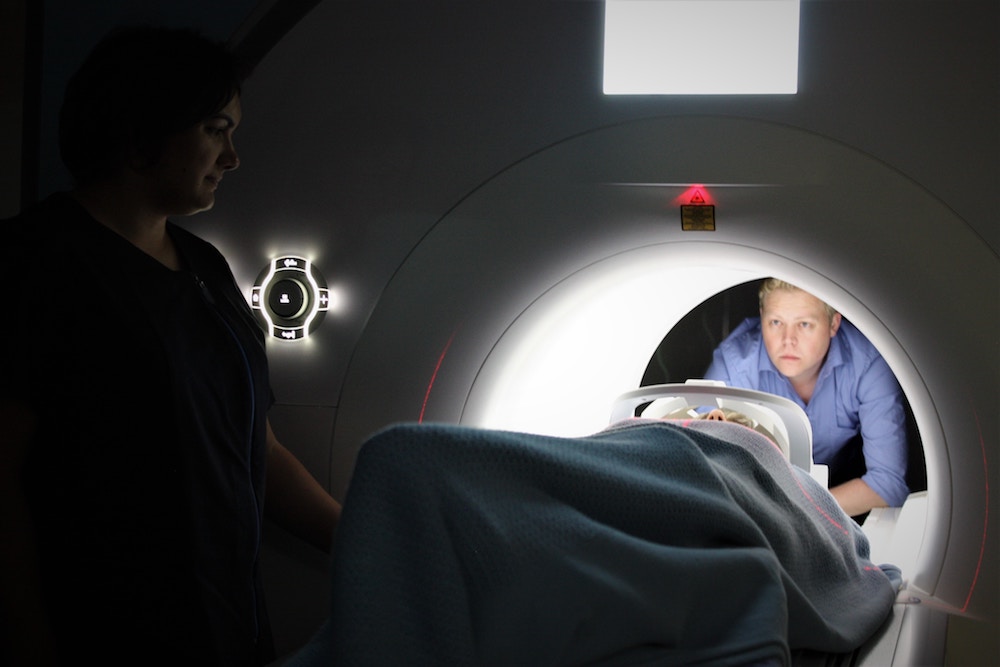 David Zigmond was a small practice GP in south London 1977-2016. Read Obituary for St James Church Surgery: the death of a practice.
David Zigmond was a small practice GP in south London 1977-2016. Read Obituary for St James Church Surgery: the death of a practice.
Recent advances in genetic mapping herald some dramatically positive developments in hi tech healthcare. Yet this is paralleled by unprecedented ailing demoralisation and alienation within the service that will deliver these. How do we explain this discrepancy? What can we expect?
It is easier to know (and understand) men in general than one man in particular.
La Rochefoucauld (1665), Maxims
In July of 2017 the Government’s Chief Medical Officer, Dame Sally Davies, gave an upbeat media interview. She reported an imminent breakthrough in the technology and modelling of human genomes: genetic mapping. The NHS is (probably) uniquely placed to do this, largely because of its enormous nationwide healthcare database that serves the majority of our population. By skilfully processing this, the NHS becomes supremely vantaged rapidly to research, and then deliver, much more specific and bespoke treatments to individuals with serious conditions – especially many cancers. Even more remarkable, such mapping is becoming much cheaper than many of the drugs currently used ineffectively.
“We are at the point of providing much more personalised – and thus effective – treatments … We can turn our cottage industry into a proper [national] service”, Dame Sally averred with optimistic good sense.
This is all good news, surely? Not just for the sufferers of serious conditions, but also for our health economy. And not just in the UK, but globally. The benefits will be relayed, to become timeless and unboundaried…
Sally Davies’ positive glow about this seems unusually well-founded in our current climate of frequently boastful yet defensive soundbites, combative retorts and crumbling slogans. Here is something really substantial. And here – again – the NHS can return to be a world leader – a beacon – after decades of increasingly fractious and contentious malaise.
***
Personalised treatment vs personal care
In many ways this project – this quantum leap in medical therapeutics – represents the quintessence of leading edge science in public healthcare: first we start with a nationally coordinated use of very detailed observation and collation from the vast stores of computerised public data (the roots), thence to much enhanced knowledge of bio-mechanisms (the branches), and finally to the precision-engineering of procedures for individual patients (the fruit). All this provides a remarkable example of how a mass approach can harvest a very precise service to each individual. Together these emblematise well a triumphant century of medical science.
Here is not merely the progressive march of scientific medicine but a quickstep into a new and important arena. A limited analysis of this will surely anticipate only good news.
But if we linger, for a more extensive analysis, we find a picture that is more complex, and certainly more mixed.
For Sally Davies’ legitimate vaunting of our imminent personalised treatment is very different to the current course and fate of another equally important and similarly named aspect of medical practice: personal care. While the former type of treatment is here propelled wilfully and confidently forward, the latter form of care is, most often, becoming unwilfully uncomprehended, then neglected, then abandoned. I will return to the causes and effects of this later.
Meanwhile, what do these terms mean?
These two terms – so similar sounding – must be almost identical, surely?
Not so, but the differences are subtle, so need careful discernment. Let us start with some suggested definitions, to help this.
Treatments can be considered as generic, procedural manoeuvres. They are guided by objectively defined bio-mechanisms, and will employ external (to the patient) resources. So treatments can be broadly thought of as being ‘scientific’ activities and pay little, if any, attention to personal meaning or understanding. Relatively, we can talk of ‘objectivity’.
Personal care, unlike treatment, cannot be universally or generically formulated, mass produced and delivered.
By contrast, care cannot be successfully received without somehow conveying such personal meaning or understanding. Indeed, the effect of care depends upon bespoke empathy and imagination: it is only through these that we may resonate with the personal experience – and so mobilise the internal resources – of others. Individual understanding and meaning are here essential. What this then means is that care, unlike treatment, cannot be universally or generically formulated, mass produced and delivered. So, care is more an ‘art’ than a science, though we need to retain science in our attitude. For example, we should use observation and empiricism to guide our wisest responses. Care remains, though, defined primarily through personal experience, so is best thought of as ‘inter-subjective’.
By analogy we can think of a treatment as being a kind of engineering, whereas care is akin to gardening.
Similarly the word ‘personal’ has, in this context, very different qualities from ‘personalised’. A personal relationship is one that grows naturally between resonant people: like care it builds on the imagination, identification and affection that develops between people, and cannot, therefore, be straightforwardly provided or commissioned by another party. This is very different to personalising an object or activity – say a car, a menu or tailored clothing – where we follow explicit specifications and often commission a third party. So personal care must find roots in an understanding of the unexpressed and implicit – broadly ‘art’ and meaning, while personalised treatment is predicated by the specifically explicit – predominantly ‘science’ and objectification.
***
The derailment of pastoral healthcare
Isn’t all this just semantic, or academic: too obscure to be useful?
No. It is important to understand the difference: indeed, our failure to understand either the difference, or its importance, lies at the root of some of our healthcare’s most costly current predicaments and failures.
We are, without deliberation or intent, tending to an inverse relationship between treatment and care.
Consider this paradox: in the last two decades, generally, our interventions that are technology-centred have become almost always better, but our human engagements are frequently worse. So we are, without deliberation or intent, tending to an inverse relationship between treatment and care. Let us take an example. If your anatomical heart is threatened by a potentially fatal infarction it is now very likely that you will be saved by coronary artery stent surgery. But if your metaphorical heart is breaking from life’s injuries or sorrows – our medically designated ‘mental disorders’ – it is increasingly unlikely you will find a GP or Psychiatrist (or one of their ‘team’) who will offer the kind of professionally intimate guided support – personal continuity of care – that will help you heal and grow. Instead you will receive – if you are lucky – a formulaic ‘treatment’ package: an attempted, but inapt, emulation of the coronary stent and its like. Efforts of treatment will here be far more evident than those of care. Increasingly often such treatments will make more sense to the administering professional than you, the patient.
This inverse relationship is not fortuitous. What has happened is that, incrementally, we have made the treatment paradigm preeminent, and then neglected care. Usually we have not understood the subtle but powerful consequences. So why have we done this? Because our expedience has far exceeded our deeper understanding. We have revelled in the success of our technology-based interventions – our curative treatments (CT). And then, because they have been so effective, we mistakenly assume we can extend their modus operandi indefinitely – to ‘manage’ areas that, in obstinate and complex reality, can rarely be so decisively cured. The consequence? Our humanity-fuelled pastoral healthcare (PH) becomes derailed, peripheralised, subsumed, displaced … and eventually it perishes.
Why is this so important? Because the inconvenient reality is this: however impressively successful CT becomes, the areas it cannot reach (those of PH) expand at a similar rate. In many ways our lives are clearly much healthier and yet, paradoxically, this release is accompanied by an increase in stress-related illnesses and symptoms (impossible to measure reliably), mental disorders (likewise), and the inevitable and ever-lengthening, ever-increasing unravellings of ageing. All such complex and refractory disorders increase alongside our expanding territory of the curable. And in all these treatment-resistant conditions our effectiveness comes far more from care than from cure.
Doctors’ cures dwindle to the impossible: as Medicine’s realm of power increases, so too – paradoxically – does its sump of impotence.
How do we best help all these people that we cannot neatly cure? What distinguishes pastoral healthcare? With the first two groups – often younger – our skill is to provide a kind of guided support, witness and comfort: a kind of ‘personal scaffolding’ that may induce healing and growth in ways that are impossible with CT-type interventions. The last group – the now-burgeoning elderly – present healthcare with an inescapable conundrum, for eventually they cannot be cured, nor healed, nor grow: our universal fate is surrender to the incurable. But even this ultimate inexorability is itself becoming more problematic. For our increasing longevity is now usually paid for by a long period of slow decline – often of many years – where our many parts will successively fail us. Doctors’ cures dwindle to the impossible: as Medicine’s realm of power increases, so too – paradoxically – does its sump of impotence.
So what is Medicine’s role in this difficult but much-frequented place, where it can neither heal nor cure? It is here – most of all – that we need the essences of pastoral healthcare. And how do we employ these essences? First we foothold our knowledge and experience and create a safe space. From this harbour we can then witness, accompany, resonate, comfort, encourage and guide. This is best exampled in good palliative care where we skilfully guide and cushion the blows that we can neither eliminate nor master.
So in our life’s most difficult transitions, and in our inevitable declines, the technocracy of curative treatments offers less and less, while the humanity of pastoral healthcare becomes cardinal.
In the end, this is all we have to offer.
But this cardinality is also very vulnerable. For pastoral healthcare is made up, primarily, of personal relationships and understandings. And – like other complex living processes – these can only thrive in certain kinds of environment.
***
REMIC and Gigantism
In a world dominated by such systems, pastoral healthcare becomes homeless and doomed to selective inattention
All this poses elusive problems for our healthcare planning and management. Especially the fact that pastoral healthcare is so much more difficult to measure than curative treatments. In an age obsessed with metrics this must have serious consequences for the hard-to-measure: indeed, PH’s recession is probably largely due to its subsequent cumulative misapprehension, then miscomprehension, then neglect. Increasingly, that which cannot be quantified cannot be coded. Inevitably then, in a world dominated by such systems, pastoral healthcare becomes homeless and doomed to selective inattention.
By contrast, the fate of that which can be readily quantified and codified – much of CT – has become increasingly efficient and expedient: well-served by standardisation, automation/computerisation, mass-production and industrialisation … and latterly commodification and marketisation. To governing agencies all this usually seems efficiently neat and tidy. But it can only be procured by compliance among our healthcarers. So those agencies have increasingly turned to devices of REMIC (remote management, inspection and compliance) and Gigantism (the tendency to centralise into larger and larger units). These, too, require short explanations.
REMIC – now mediated by ubiquitous IT systems – has made for remarkable advances in our capacity to regulate, monitor, assure compliance and quickly identify outliers. This can certainly confer safety and efficiency, but only up to a point. Beyond that, inordinate and unwise use can quickly turn to Technototalitarianism.1
Gigantism – the natural ally of REMIC – is the tendency of all industrialisation to scale-up, whether it is retail or manufacturing. The gains and losses this brings to our healthcare are similar to those befalling our social life and environment. Yes, we are often grateful for enhanced convenience and efficiency brought by Gigantism – our networked motorways, our conurbated shopping arcades – but in these processes we are aware of subtle losses: personal, relational and aesthetic. For, as many of us know privately, it is often such subtle immeasurable things that are most important to us.
***
The human cost of REMIC
REMIC and Gigantism have quickly become the two determining forces of our healthcare evolution and conduct. They have grown roots and branches so rapidly as to become cultural, so axiomatic. ‘That’s just how things are … You’ve got to play the game’ are now familiar workforce refrains of surrender offered in diverse exchanges: justification, advise, stoic testament…
The broader consequences of Gigantism and REMIC in our healthcare are often far from those intended. The economic and efficiency benefits remain questionable. But what seems clearer is the damage done by industrial-type scale and ethos to the quality of morale and relationships among healthcarers. This is true particularly for those whose work should be – I would argue – often primarily personal and relational: pastoral healthcare. General Practice and Mental Health are major examples.
How do these organisational devices harm us?
Well, Gigantism – unless we are very careful – destroys the smallness of scale in which people may best recognise, get to know, understand and care about one another. Senses of locality, familiarity and affection are all easily extinguished by kaleidoscopic enormity. In such conditions pastoral healthcare will fare much worse than curative treatments. This is because Gigantism so easily tends to environments where – increasingly – we know one another less and less: the email signal displaces the nuanced conversation, we view the data but have not witnessed the story, we know the procedure but not the person.
Similar experiences have come from REMIC, so many caveats are shared. REMIC is implemented to assure a more precise and timely fit between the different human cogs of the NHS machine. Its strategies are those of command-and-control, reward and punishment, and increasingly forensic-type inspections and appraisals. There have certainly been benefits from all this: important disease prevention and treatment programmes have brought good results; practitioners who are serious DSRs (duffers, slackers or rotters) are less likely to survive in post.
But the price we are now paying for REMIC is too high. For REMIC, in our excess implementation, is destroying, or seriously injuring, the art, heart, craft, wit and intellect of our profession. REMIC now all too easily replaces intelligent judgement by compliant box-ticking, internal motivation by external incentivisation, personal meaning by sticks and carrots, vocation by corporation. We replace colleagueial dialogue within a vernacular frame by mass-management within a frame increasingly remote, receding and alien.
Few practitioners can survive with the kind of morale, enthusiasm or fertile professional longevity of those in the pre-REMIC era of, say, twenty years ago.
The result? Few practitioners can survive with the kind of morale, enthusiasm or fertile professional longevity of those in the pre-REMIC era of, say, twenty years ago. The evidence of our increasing weariness, dispiritedness and sickness has much very clear apocryphal and statistical evidence. Our world of ever-larger hospitals, general practices and medical schools all scale up for our efficiency but then lose our personal identification and connections. In these conurbations our REMIC-controlled practitioners show many signs of the human cost of losing balance between our often conflicting needs. Poor healthcare staff recruitment and retention, drug abuse and alcoholism, wide-ranging sickness rates and family disintegrations are all increased in our drive to increase performance output and efficiency. This ‘treatment’ of our NHS’s previous shortcomings – by mandating Gigantism and hard REMIC, and then adding increased marketisation – is instead making our organisation iller. And it is pastoral healthcare – rather than curative treatments – that shows the earliest and most severe symptoms.
If this enormous organisation – our NHS – were an individual patient we would see here iatrogenesis. But to withdraw sickening reforms from an ailing organisation seems harder than withdrawing a harmful treatment from an individual.
***
Living in technically brilliant but humanly perilous times
Let us return to the beginning, to Dame Sally Davies’ well-informed and cheerful prospects about genetic mapping. Yes, I am sure that such scientific advances will make our curative treatments quicker and more potent. But in those future decades, what will become of pastoral healthcare?
I can imagine future scenarios for both.
If I have – say – a malignancy or need vascular surgery, I can anticipate speedier, more precise diagnosis and effective cures with fewer adversities.
But say, instead, I am an elderly childless widow, of sensitive, introverted nature. My cat – my only companion – dies and so, too, does my life-spirit. What will be the chances of my consulting a family doctor who has long witnessed and then understood both my outer and inner life? As my life unravels, who will understand the massive significance – for me – of my cat’s death?
It is pastoral healthcare’s task to understand and guide such things. Sometimes such offerings of personal imagination bring gratifying rewards: they are enough to decisively shift the balance from illness to health. But even with the incurable – eventually the inevitable – it is pastoral healthcare that, through skilled human connection, can comfort, palliate and infuse our fate with humanity and meaning.
We are living in technically brilliant but humanly perilous times. As our genomes become precisely data-mapped we must take care not to lose personal sight of one another.
—–0—–
Studying neurobiology to understand humans is like studying ink to understand literature.
Nassim Nicholas Talib
Reference
- ‘Edward: shot in his own interest. Technototalitarianism and the fragility of the therapeutic dance’, Journal of Holistic Healthcare, Vol 2. Issue 4. November 2005
Interested? Many articles exploring similar themes are available via David Zigmond’s home page on www.marco-learningsystems.com
Image: Ken Treloar










5